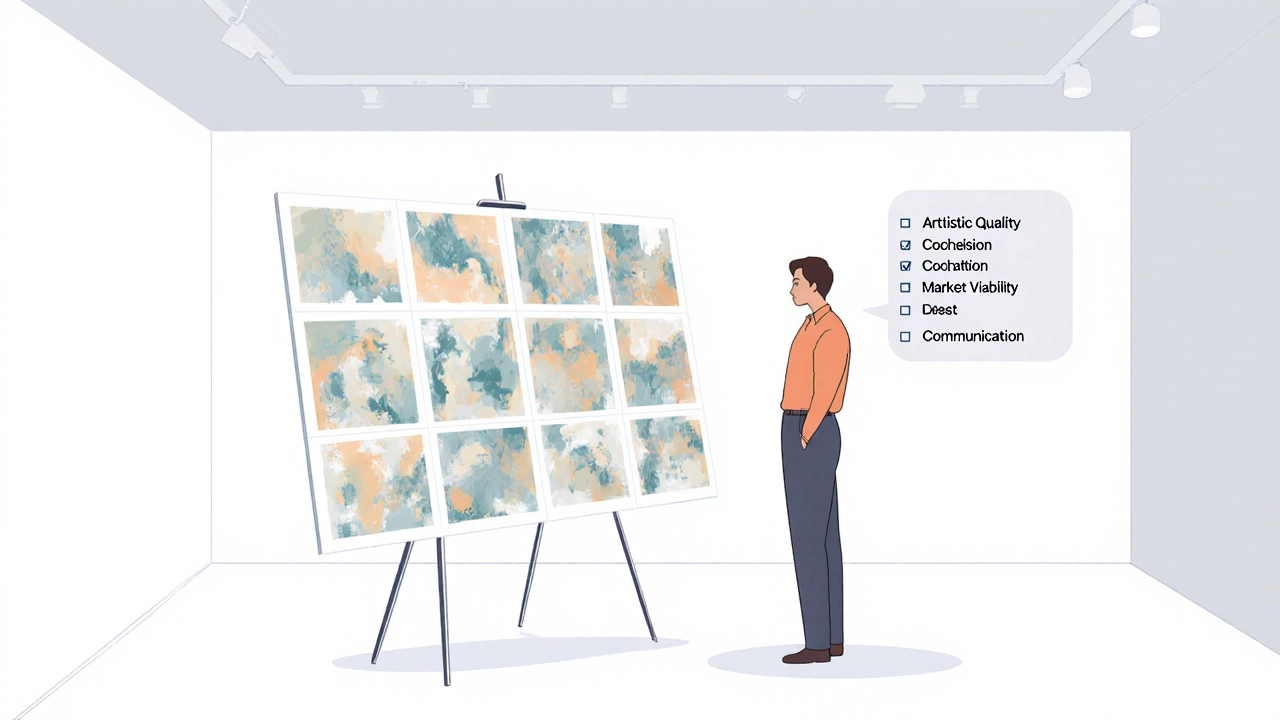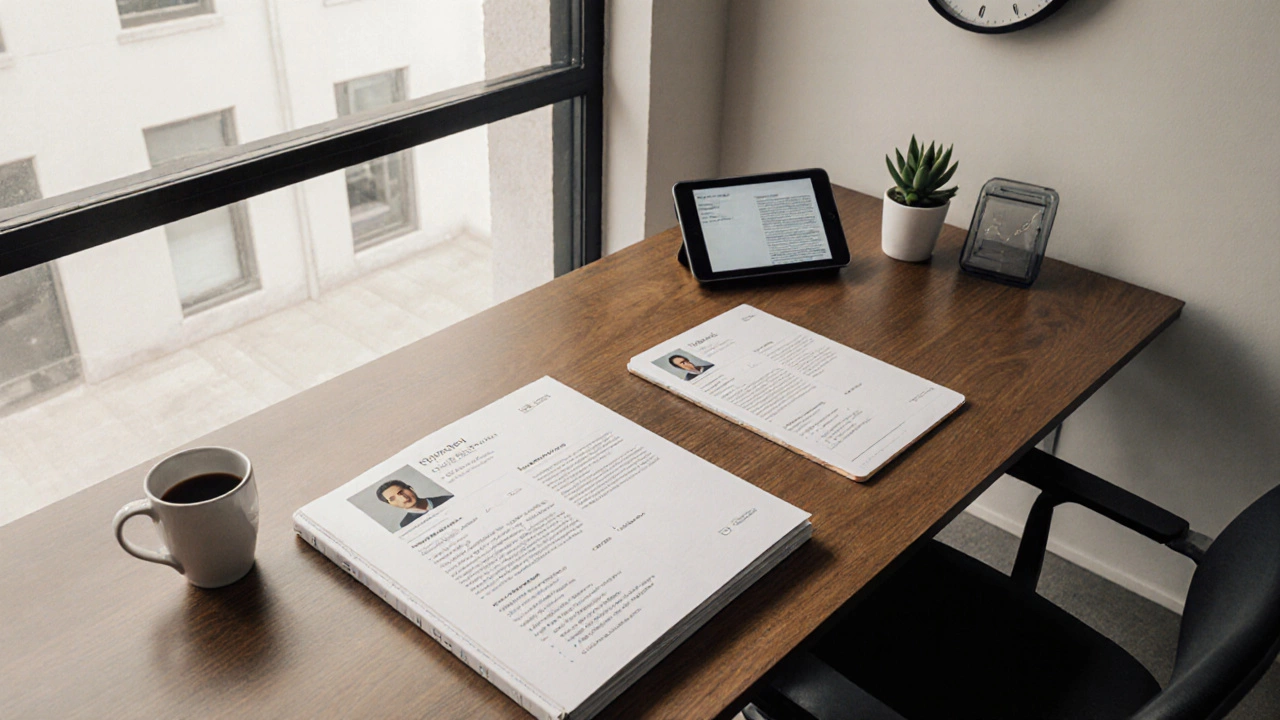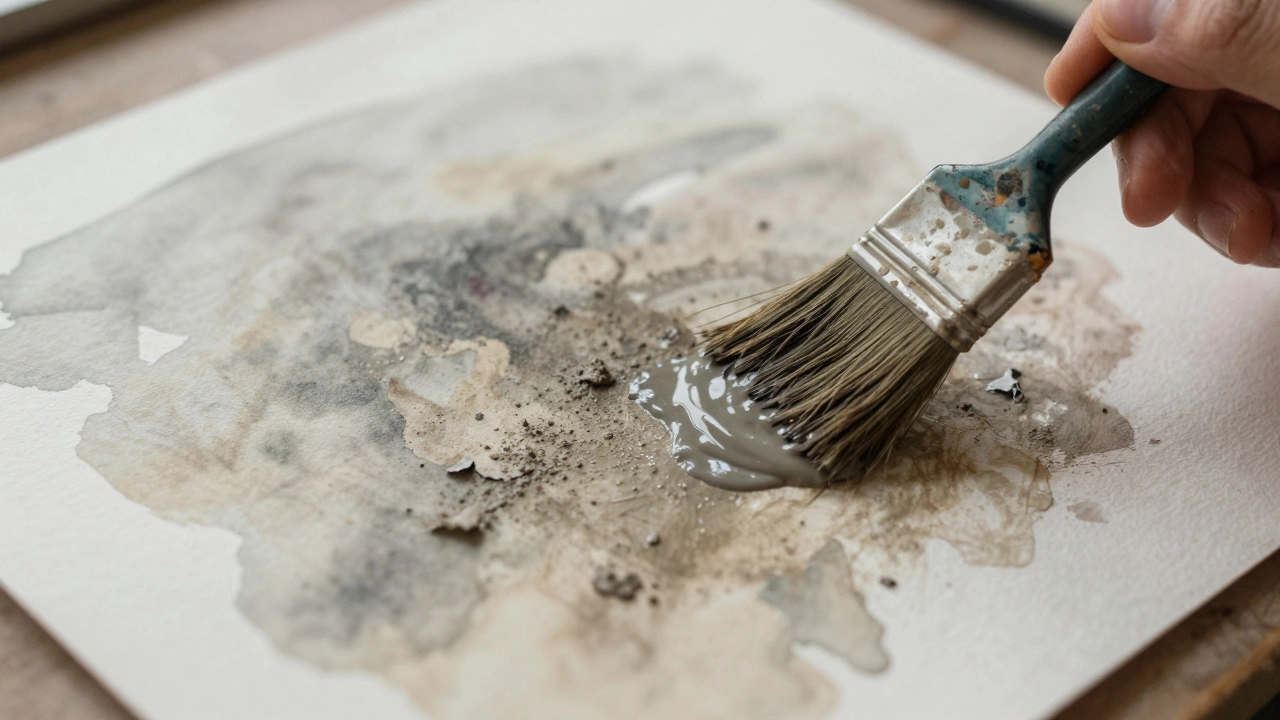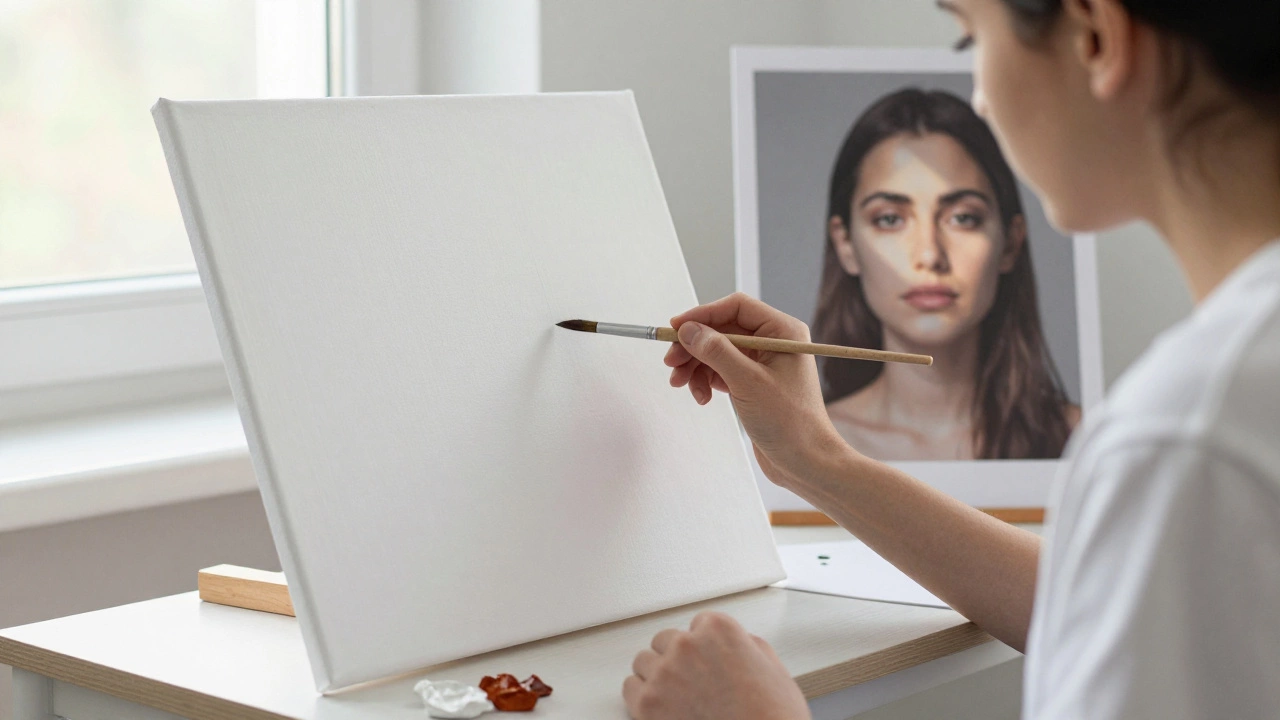Every emerging artist wonders why some galleries knock on their door while others don’t. The truth is, galleries run a business - they need to fill walls, attract collectors, and stay true to their brand. Understanding what they actually look for can turn a cold submission into a partnership.
Key Takeaways
- Galleries prioritize a cohesive body of work that matches their program.
- Professional presentation - a polished artist portfolio a curated collection of images, CV and artist statement - is non‑negotiable.
- Sales history and market relevance matter, but they can be offset by strong critical support.
- Clear communication and reliability are as important as the art itself.
- Preparing a checklist before you reach out saves time and shows you’re serious.
Gallery a commercial space that showcases, sells and promotes visual art operates like any other retail outlet: they need foot traffic, repeat buyers, and a clear identity. When a gallery scans an artist’s dossier, it quickly asks a handful of questions, and each answer can make or break the conversation.
How Galleries Evaluate Artists
Below is the mental checklist most curators professionals who select artworks for exhibitions run through when they first encounter a submission.
1. Artistic Quality & Originality
Technical skill matters, but galleries are drawn to a voice that feels fresh. They ask: Is the work conceptually compelling? Does it push boundaries or offer a new perspective? Artists who can articulate why their approach matters stand out.
2. Consistency & Cohesive Body of Work
One stellar piece won’t sustain a solo show. Galleries look for a series or a visual language that can fill a wall without feeling disjointed. Consistency shows the artist has depth and can sustain future exhibitions.
3. Professional Presentation
A clean, well‑structured portfolio a digital or printed compilation of images, CV, and artist statement signals that the artist respects the gallery’s time. High‑resolution images, accurate dimensions, and clear labeling are basics; a thoughtfully written statement that connects the work to a larger narrative is a plus.
4. Market Viability & Sales History
While emerging artists may lack a robust sales record, galleries still ask: Have any pieces sold? What price points were they? Even a single transaction with a reputable collector can be a strong signal. If sales data is thin, a solid press kit or critical reviews can help fill the gap.
5. Relationship & Communication
Galleries value artists who are responsive, meet deadlines, and are easy to work with. A quick reply to an email, a clear contract discussion, and reliability during installation can tip the scales in your favor.
6. Alignment with the Gallery’s Program
Each gallery curates exhibitions that reflect its mission, aesthetic, and collector base has a defined program - contemporary abstraction, figurative realism, environmental art, etc. Artists whose work dovetails with that focus are more likely to be offered representation.
7. Practical Considerations
Logistics matter: Can the artist produce work at a scale the gallery can handle? Are the materials transportable? Will installation be straightforward? Galleries often favor artists who can provide clear specs and handle the practical side of an exhibition.

Checklist for Artists Before Approaching a Gallery
- Curate a cohesive body of 10‑15 works that share a clear visual or conceptual thread.
- Prepare a high‑resolution portfolio PDF or website with images, titles, dimensions, medium, and year .
- Write a concise artist statement (150‑250 words) that explains your practice and its relevance to contemporary discourse.
- Update your CV with exhibitions, residencies, awards, and any sales or press mentions.
- Gather supporting materials: press clippings, critical essays, and high‑quality images of installations.
- Research each target gallery to understand its program, represented artists, and recent shows .
- Craft a personalized email that references specific exhibitions or artists at the gallery and explains why your work fits.
- Be ready to discuss pricing, availability for group shows, and logistics (shipping, installation).
What Galleries Prioritize - A Quick Comparison
| Criterion | What Galleries Look For | How Artists Can Demonstrate It |
|---|---|---|
| Artistic Quality | Technical skill + distinctive voice | High‑resolution images, detailed process notes |
| Body of Work | Cohesive series or clear visual language | Portfolio grouped by theme or style |
| Market Viability | Sales record or collector interest | Include sales data, collector testimonials |
| Program Fit | Alignment with gallery’s mission | Reference specific past shows in your email |
| Professionalism | Timely communication, reliable delivery | Prompt replies, clear contracts, installation plan |
| Logistics | Manageable size, transport, installation | Provide dimensions, weight, mounting details |

Next Steps & Troubleshooting
If you’ve sent out submissions and heard nothing, consider these quick fixes:
- Check your email subject line. Galleries get dozens daily; a clear subject such as “Submission - [Your Name] - [Series Title]” helps them spot you.
- Make sure your portfolio links open quickly and are mobile‑friendly . Slow loading images are a red flag.
- Re‑evaluate program fit. If a gallery focuses on digital media and you submit oil paintings, the mismatch will show.
- Seek feedback from peers or a mentor who has exhibited. Fresh eyes often catch missing details.
When a gallery shows interest, move fast. Prepare a contract draft, confirm pricing, and outline a timeline for delivery and installation. Demonstrating that you can handle the business side makes the artistic side feel less risky.
Frequently Asked Questions
Do I need to have sold a piece before a gallery will consider me?
Sales help, but they aren’t mandatory. Strong critical reviews, museum residencies, or inclusion in reputable group shows can compensate for a limited sales record.
How many works should I include in my submission?
Aim for 10‑15 high‑quality images that showcase the breadth of your current series. Too few look incomplete; too many overwhelm the reviewer.
What should I write in my artist statement?
Focus on the ideas driving your work, the materials you use, and how you see your practice within today’s art world. Keep it concise-150‑250 words-and avoid jargon.
Is it okay to submit to multiple galleries at once?
Yes, but be transparent if a gallery asks. If you receive an offer, let the others know promptly to maintain professional relationships.
How important is social media following for gallery representation?
It’s a bonus, not a requirement. Galleries care more about sales and critical traction, but a strong, engaged online audience can tip the balance for commercial spaces.





